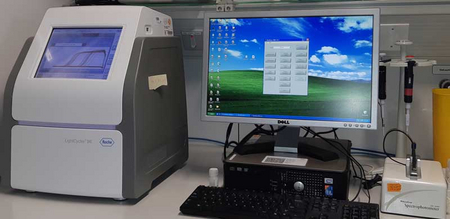The Gene Expression Facility is equipped and experienced with qRT-PCR analysis. We offer analysis and service for any type of qRT-PCR related projects, starting with nucleic acid isolation, sample quality control, cDNA synthesis, experimental design, execution of the experiments, data analysis and data storage.

* joint first author
# joint corresponding author